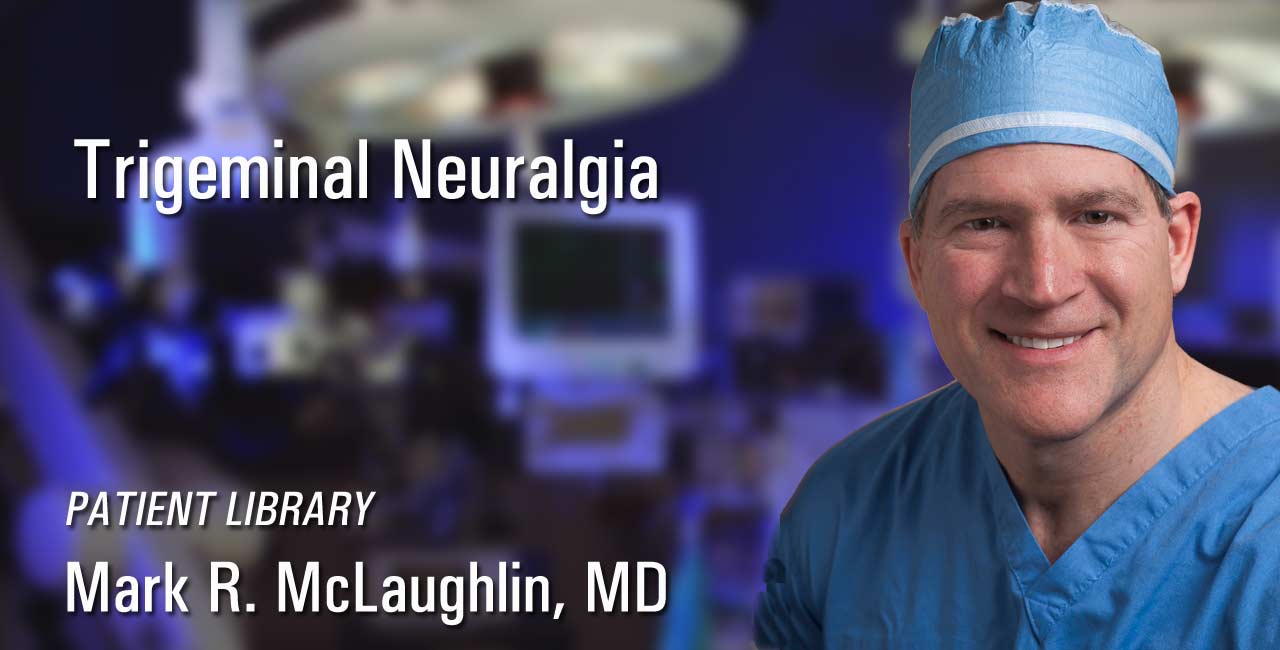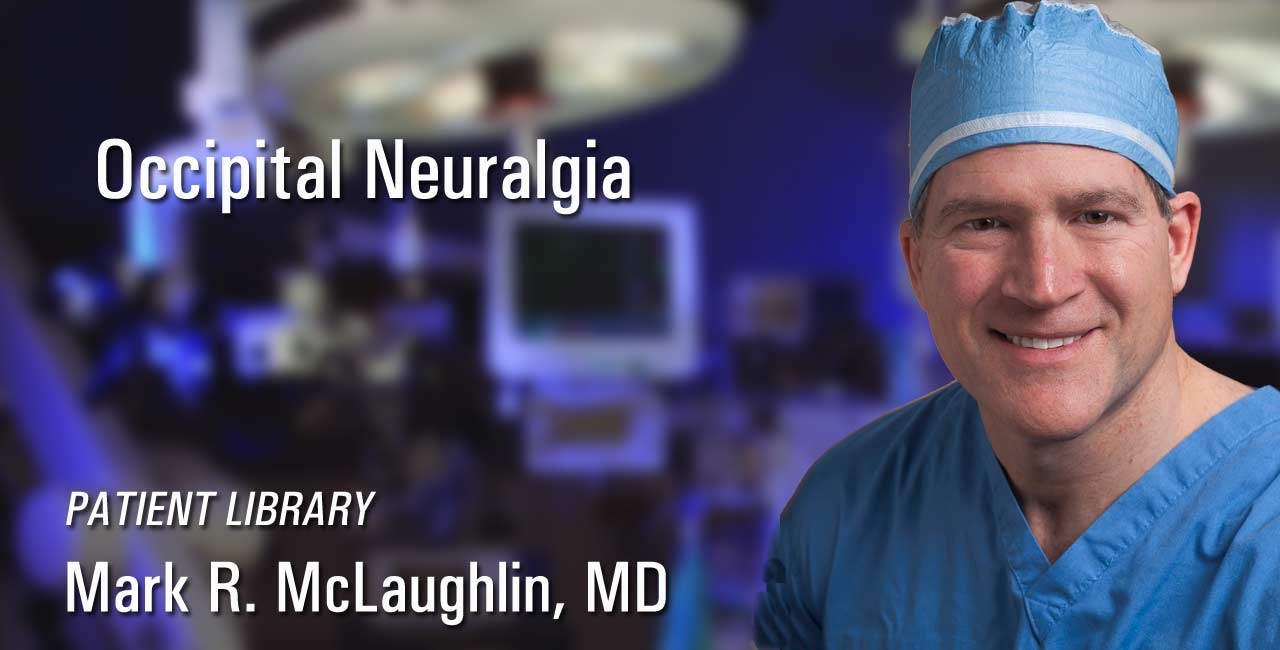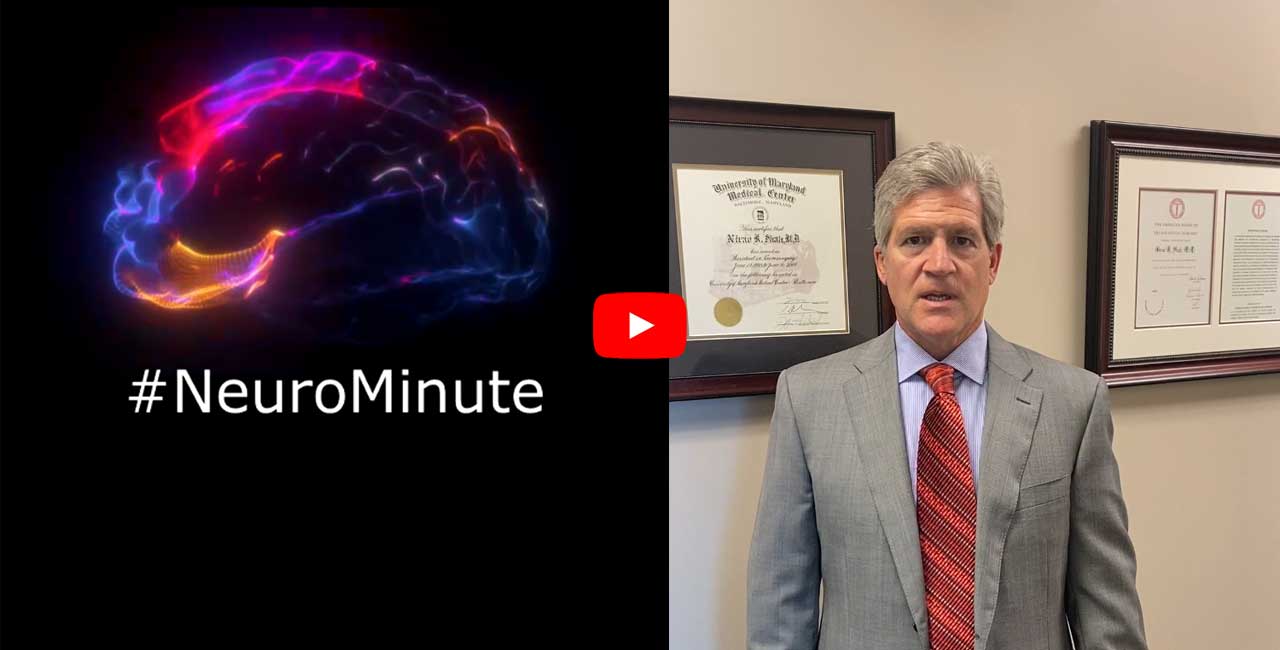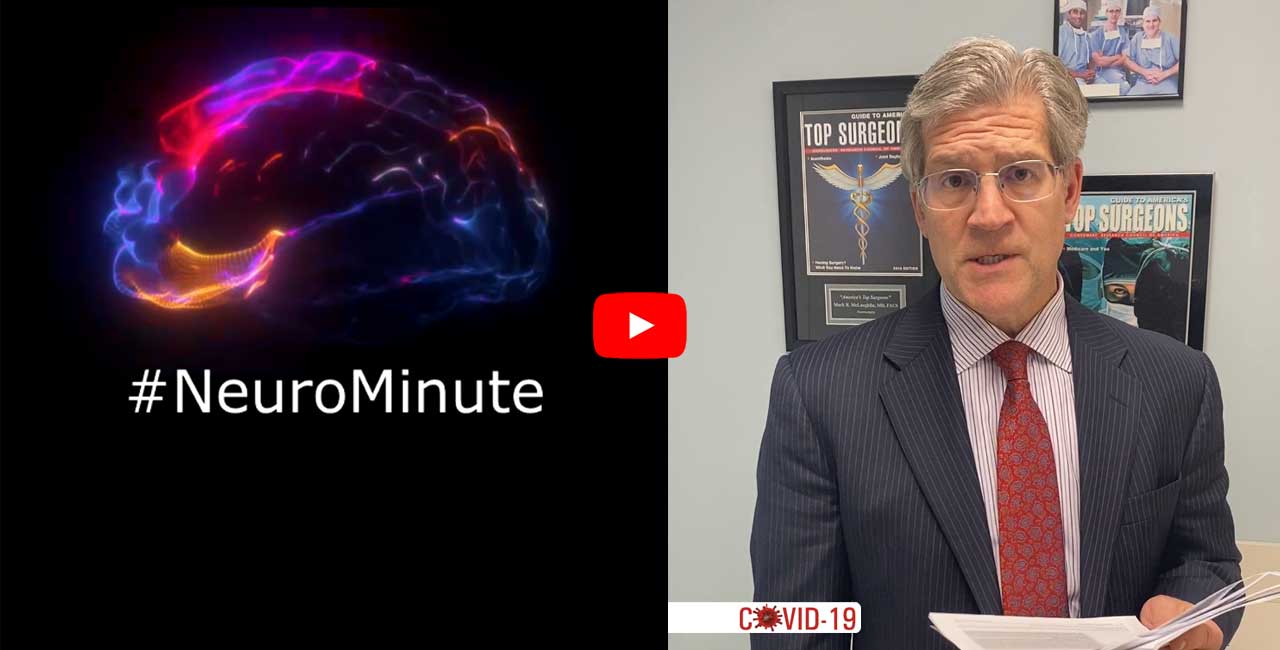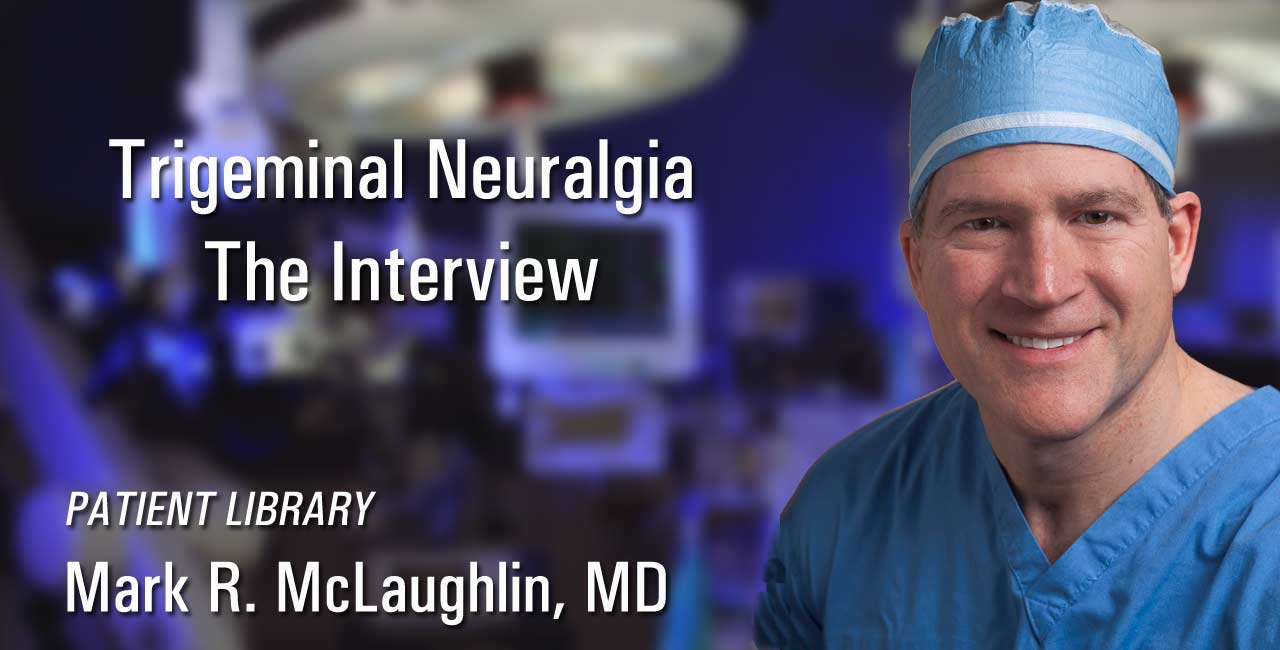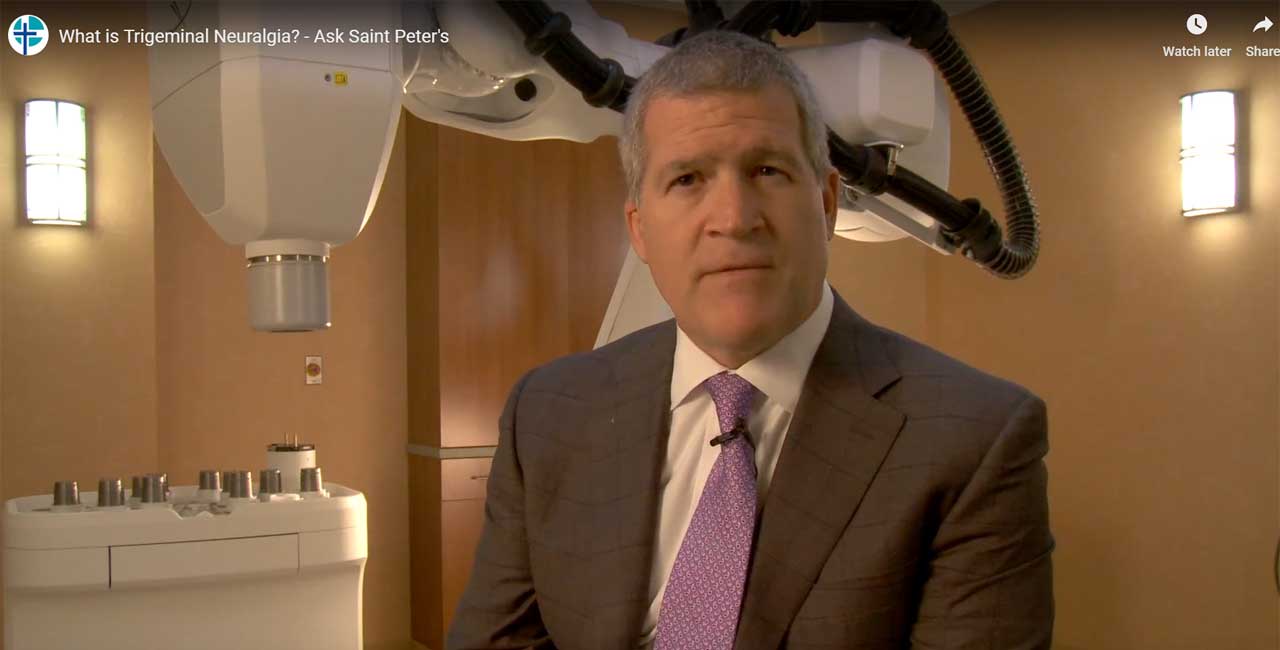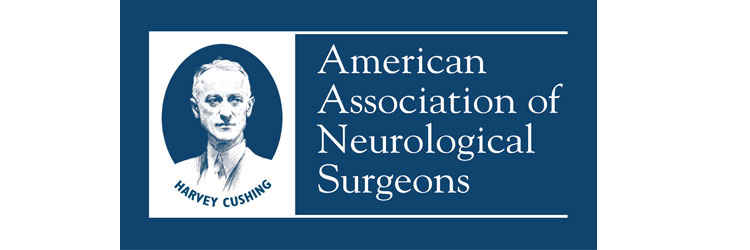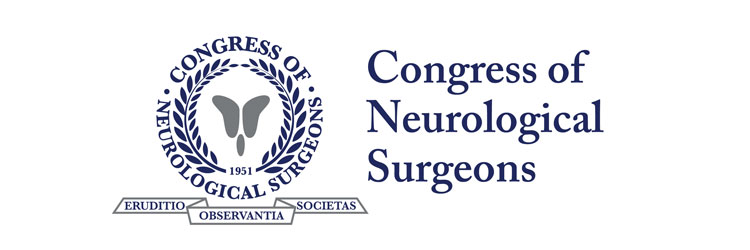What Is Occipital Neuralgia?

by Mark McLaughlin, MD, FACS, FAANS
Understanding Occipital Neuralgia: Causes and Symptoms
Occipital neuralgia is a distinct type of headache characterized by piercing, throbbing, or electric-shock-like chronic pain in the upper neck, back of the head, and behind the ears, usually on one side of the head. It is often misdiagnosed. Dr. McLaughlin is expert in the diagnosis and treatment of occipital neuralgia
Subscribe to Mark's YouTube Channel
Occipital neuralgia is an irritation of the greater occipital nerve, characterized by pain in the back of the head, behind the ear, radiating up to the top of the head/ sometimes behind the eye. It is a neurological condition characterized by chronic pain in the back of the head, often radiating behind the ear and sometimes extending up to the top of the head or behind the eyes. This condition occurs when the greater occipital nerve, which is responsible for transmitting sensations from the scalp to the brain, becomes irritated or inflamed.
Anatomy of the Greater Occipital Nerve
The greater occipital nerves play a crucial role in sensory transmission from the scalp. These paired nerves, one on each side of the head, emerge from the spinal cord between the cervical vertebrae C1 and C2 in the upper neck. They then travel through the muscles at the back of the head, reaching into the scalp. While these nerves primarily provide sensation to the back and top of the head, they can extend as far forward as the forehead, although they do not innervate the face or areas near the ears, which are supplied by different nerves.
Most of your feeling in the back and top of your head is sent to the brain by the two greater occipital nerves. Occasionally, the occipital nerve reaches almost to the forehead, but the nerves do not cover the face or the area near the ears; other nerves supply these regions.
What causes Occipital Neuralgia?
Often times it is the result of a trauma such as a whiplash or a bad head injury, but it can also occur spontaneously.
Some common causes include:
- Compression of the space between the vertebral bones of C1 and C2. Compression in the space between these cervical vertebrae can irritate the nerve as it emerges from the spinal column.
- Compression of the atlantoaxial ligament as the dorsal ramus emerges and exits the spine
- Compression of the deep to superficial turn around the inferiolateral border of the obliquus capitis inferior muscle and its tight investing fascia
- The greater occipital nerve can become entrapped within or around this muscle, either on its deep side during its initial piercing or on its superficial side as it exits the muscle resulting in:
- Compression of the deep side of semispinalis capitis, where initial piercing can involve entrapment in either the muscle itself or surrounding fascia or
- Compression of the superficial side of semispinalis capitis, where completion of nerve piercing muscle and its fascia again poses risk
Symptoms of Occipital Neuralgia
The hallmark symptom of occipital neuralgia is intense, piercing, or throbbing pain that begins at the base of the skull and can radiate upwards towards the scalp, often affecting one side of the head. Some individuals may experience pain behind the eyes, sensitivity to light, and even scalp tenderness. The pain may be intermittent or constant and can be triggered or worsened by specific movements, such as turning the head, or by pressure applied to the back of the neck or scalp.
Surgery for Occipital Neuralgia
We also recommend this article from the American Association of Neurological Surgeons.
Neuralgia Information for Patients - Expert Princeton Neurosurgeon
Surgery for Occipital Neuralgia
Surgical treatment for occipital neuralgia is sometimes required. In this video, Dr. McLaughlin explains the key points that will be considered before surgery is recommended.
What is Occipital Neuralgia?
Occipital neuralgia is a distinct type of headache characterized by piercing, throbbing, or electric-shock-like chronic pain in the upper neck, back of the head, and behind the ears, usually on one side of the head.
Trigeminal Neuralgia | Tic Douloureux
Trigeminal neuralgia (also called Tic Douloureux) is a chronic pain condition characterized by recurring episodes of extreme, sporadic, sudden burning or electric shock-like face pain.
Glossopharyngeal Neuralgia
Glossopharyngeal neuralgia is a condition characterized by recurring episodes of severe pain in the tongue, throat, ear, and area near the tonsils. An overview from Dr. McLaughlin.
Occipital Neuralgia
Occipital Neuralgia (ON) is a common disease that is often often misunderstood or not diagnosed by many physicians. Princeton New Jersey neurosurgeon Mark R. McLaughlin, MD explains.
Trigeminal Neuralgia in a Time of COVID-19
Video: Stress may result in increased perception of facial pain from Trigeminal Neuralgia. Dr. McLaughlin offers some thoughts on dealing with TN during the coronavirus crisis. April 2020
Trigeminal Neuralgia: COVID19 - Video Update
September 2021: Video update with Mark R. McLaughlin, MD. What you need to know about COVID19 and Trigeminal Neuralgia.
Trigeminal Neuralgia with COVID-19 Virus
Video January 2022 : Dr. McLaughlin highlights the current literature as it relates to Trigeminal Neuralgia and the Covid Virus. What have we learned?
Trigeminal Neuralgia : Covid-19 Vaccination
A January 2022 review of medical literature related to COVID-19 vaccination, Trigeminal Neuralgia, and Neurological Complications. What does the medical literature tell us?
WGN TV Video About Trigeminal Neuralgia
The wife of WGN Sports Anchor Pat Tomasulo suffers from Trigeminal Neuralgia. An informative video.
Trigeminal Neuralgia : The Interview
Dr. McLaughlin was interviewed about Trigeminal Neuralgia and his experience as a top Neuralgia specialist in New Jersey.
Saint Peter's Healthcare Video: Trigeminal Neuralgia
One of my great passions is the treatment of Trigeminal Neuralgia. It is a traumatizing and painful condition. This video was prepared for Saint Peters Healthcare. In it, I answer some common questions about TN.


